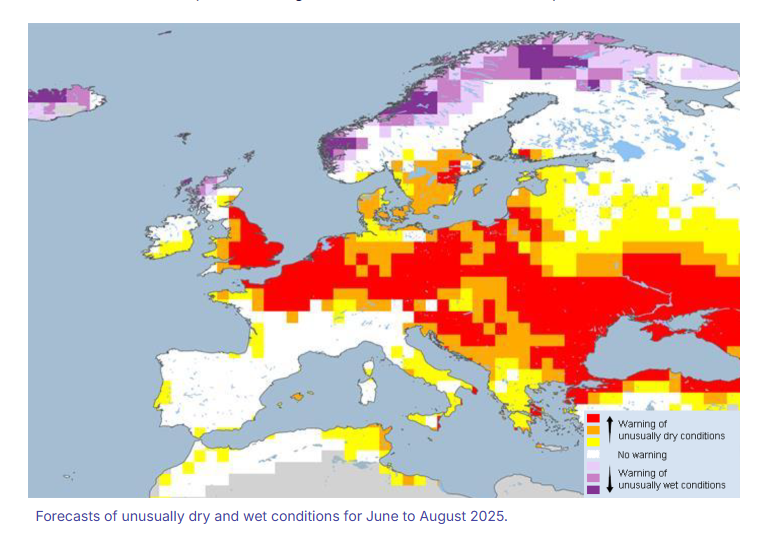News
Escalating drought threatens Europe's ecosystems and agriculture

Europe's growing drought conditions
A severe drought is affecting large regions in central, northern and eastern Europe as well as in the eastern Mediterranean and in north-western Africa, with significant impacts on vegetation growth and on rivers.
These drought conditions were triggered by the lack of rain between March and the end of May, compounded by above-average temperatures in several regions. Temperature anomalies beyond 2 °C were observed, for instance, in Iceland, southern Norway, Ireland, northern France and along the Alps.
Impact on agriculture and vegetation
The impact of the drought is already visible in agriculture and vegetation in some areas, with eastern Europe experiencing emerging vegetation stress conditions. Soil moisture deficits are hampering plant growth, especially in the Mediterranean.
The JRC Monitoring Agricultural ResourceS (MARS) Bulletin reported that north-western Europe – including Benelux, northern France, and Germany – is facing a severe rainfall deficit, leading to concerns over winter and spring crop yields which will soon be sown. Conversely, the Iberian Peninsula, Italy, and Greece have experienced abundant rainfall and favourable conditions that could lead to 15-20% higher yields, for example in Spain and Portugal.
River flows and transport disruption
River transport is also under strain in some regions, with low river discharge levels reported in eastern Europe and around the Baltic Sea. Disruptions in water availability and transport may occur in July in western Russia, south-eastern Türkiye, and central-eastern Mediterranean islands.
The Rhine River, which has faced challenges in recent years, remains navigable thanks to upstream contributions.
Forecasts indicate continued challenges and call for proactive measures
Seasonal forecasts point to warmer and drier than average conditions across much of Europe during this summer, particularly in northern and eastern regions. Adopting proactive measures to safeguard water resources would help in reducing the risks associated with the predicted evolution of the current drought.
Document available here :
